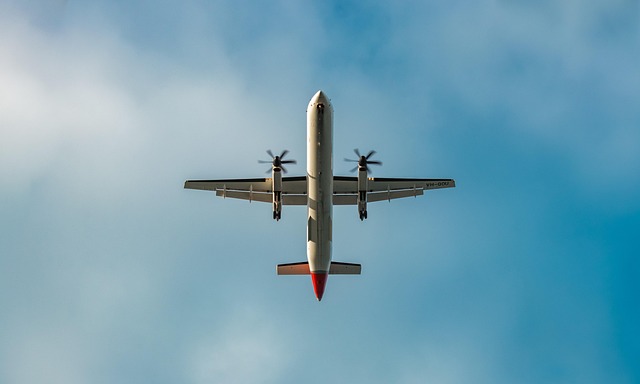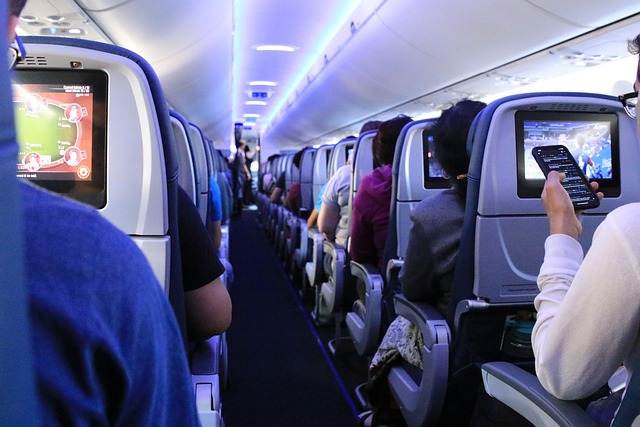In dynamic Karachi, the airline industry adapts its fare structures based on economic factors and consumer preferences, employing flexible pricing models driven by competition. Airlines adjust prices according to demand, seasonality, and promotions, offering surge pricing during peak seasons and discounts during off-peak times. This adaptability caters to varied traveler needs, solidifying Karachi's role as a major transportation hub. Dynamic pricing strategies, including personalized offers based on data analytics, encourage travel during off-peak periods while maintaining profitability. While introducing innovative fares can enhance revenue, careful execution is required to preserve customer loyalty in this highly competitive environment.
In the dynamic aviation sector of Karachi, airline fare structures are undergoing constant adjustments, reflecting a complex interplay of market forces. This article explores the evolving landscape of airline pricing in the city, delving into dynamic pricing strategies and factors influencing local fare changes. We analyze their impact on customers’ travel decisions, present case studies highlighting successes and challenges, and predict future trends shaping Karachi’s aviation sector. Key SEO keywords, including “Karachi,” are seamlessly integrated throughout.
- The Evolving Landscape of Airline Pricing in Karachi
- Dynamic Pricing Strategies: How Airlines Set Fares
- Factors Influencing Fare Adjustments in the Local Market
- Impact on Customers: Perceived Value and Travel Decisions
- Case Studies: Success Stories and Challenges Post-Fare Changes
- Future Trends: Predicting Fare Structures in Karachi's Aviation Sector
The Evolving Landscape of Airline Pricing in Karachi

In the dynamic city of Karachi, the airline industry has witnessed significant shifts in fare structures, reflecting a complex interplay of economic factors and evolving consumer preferences. The pricing landscape here is as diverse as the city itself, with various airlines offering tailored packages to cater to a broad spectrum of travelers. Historically, Karachi’s aviation market has been characterized by intense competition, leading to more flexible and dynamic pricing models. This trend continues today, with carriers frequently adjusting fares based on demand, seasonality, and promotional strategies.
These adjustments have had notable effects on both passengers and the industry as a whole. For instance, during peak travel seasons, airlines may implement surge pricing while offering discounts during off-peak times to encourage travel. Such dynamics ensure that Karachi’s aviation sector remains responsive to market demands, providing travelers with opportunities for affordable travel when possible and premium experiences when needed. This adaptability is crucial in maintaining the city’s status as a major transportation hub and facilitating its continuous growth.
Dynamic Pricing Strategies: How Airlines Set Fares

Airlines in Karachi and across the globe have adopted dynamic pricing strategies as a key element in their fare structures. This approach involves constantly adjusting ticket prices based on real-time demand, competition, and various other factors. By leveraging sophisticated algorithms and data analytics, carriers can offer lower fares during periods of low demand while increasing prices during peak travel times. Such flexibility allows airlines to optimize revenue and maintain competitive edge.
Dynamic pricing in Karachi’s aviation sector has led to notable changes in passenger behavior. Travel-hungry residents now plan trips around discounted fares, encouraging off-peak travel. Conversely, tourists and business travelers are drawn to the city during higher-priced periods, contributing to a more balanced distribution of visitors throughout the year. This strategy not only benefits airlines but also promotes a vibrant local tourism industry.
Factors Influencing Fare Adjustments in the Local Market

In the dynamic landscape of air travel, fare structures in Karachi, like elsewhere, are influenced by a multitude of factors. Local market conditions play a significant role, with demand fluctuations, competition among airlines, and seasonal variations all impacting ticket prices. For instance, peak tourist seasons or major events in Karachi can drive up demand, leading to higher fares as airlines adjust their rates accordingly. Conversely, off-peak periods often result in lower fares as carriers aim to fill seats.
Competition is another critical element shaping fare adjustments in Karachi’s aviation market. The presence of multiple airlines operating similar routes encourages price competition, with companies offering discounts and promotions to attract customers. This competitive dynamic can lead to more affordable travel options for residents and visitors alike. Additionally, regulatory factors and government policies regarding aviation taxes and fees also contribute to the overall fare structure, ensuring a balanced approach that considers both consumer welfare and airline profitability.
Impact on Customers: Perceived Value and Travel Decisions

In the dynamic landscape of air travel, adjustments in fare structures significantly impact customers’ perceived value and subsequent travel decisions. With Karachi, as a bustling metropolis, witnessing frequent changes in airline offerings, fliers are becoming increasingly discerning. Alterations in pricing strategies can either incentivize or deter travelers; for instance, introducing flexible fares may encourage spontaneous trips, while strict policies could promote long-term planning. Customers weigh these adjustments against the value they associate with their travel experience, including factors like comfort, service quality, and accessibility of destinations.
Perceived value becomes a critical determinant in whether a customer chooses to book a flight or explores alternative travel options. In Karachi, where diverse cultural influences meet, airline fare structures must cater to a wide range of preferences and budgets. A well-calibrated fare strategy that balances competitive pricing with appealing amenities can lead to increased customer satisfaction and loyalty. Conversely, poorly executed adjustments might result in negative perceptions, driving customers towards competitors offering more favorable terms, especially in a market as competitive as Karachi’s aviation sector.
Case Studies: Success Stories and Challenges Post-Fare Changes

In the dynamic landscape of aviation, adjustments in airline fare structures have been both a strategic tool and a double-edged sword for carriers worldwide, including those in Karachi. Case studies from various airlines highlight successful transformations where revised fare strategies led to increased profitability and customer satisfaction. For instance, an airline in Karachi implemented a dynamic pricing model, adapting ticket prices based on real-time demand, which boosted revenue while offering competitive rates during off-peak hours. This approach echoed success stories from global peers who optimized their fare structures to cater to diverse market segments.
However, not all post-fare changes have been as triumphant. Challenges arose when some carriers in Karachi failed to balance innovation with customer retention. Introductory low-fare campaigns backfired, leading to a temporary dip in passenger numbers as travelers expected continued low rates. These experiences underscore the importance of striking a delicate balance between revenue generation and maintaining customer loyalty, especially in competitive markets like Karachi’s.
Future Trends: Predicting Fare Structures in Karachi's Aviation Sector

As the aviation industry continues to evolve, Karachi’s fare structures are expected to reflect emerging trends. One notable trend is the increasing personalization of fares, with airlines leveraging data analytics to offer tailored pricing based on individual traveler profiles and preferences. This approach could enhance customer satisfaction by presenting relevant and competitive options in Karachi’s bustling aviation sector.
Additionally, dynamic pricing, which adjusts according to market demand, supply, and external factors like fuel costs, is set to become more prevalent. Airlines operating in Karachi may employ sophisticated algorithms to optimize fare strategies, ensuring profitability while offering attractive rates during less peak periods, thereby encouraging travel and fostering a competitive environment.
The dynamic nature of airline fare structures in Karachi reflects a complex interplay of market forces, technological advancements, and customer preferences. By understanding these adjustments and their effects, both airlines and travelers can better navigate the evolving aviation landscape in Karachi. As the industry continues to innovate, predicting future trends will be crucial for ensuring sustainable growth and maintaining customer satisfaction in this vibrant market.

Leave a Reply